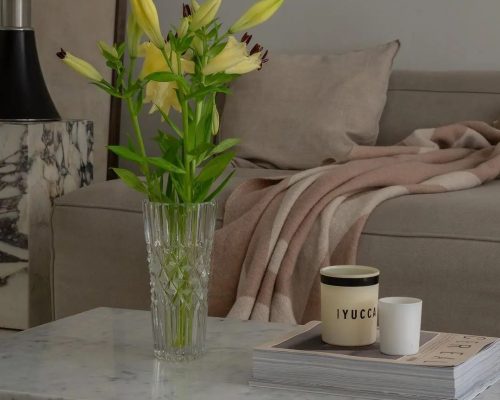Achieving that lush, colorful, and abundant garden at home isn’t just a pipe dream; it’s a reality simply waiting to be developed. We’re glad you’re here to learn how to master indoor gardening. Our goal is to provide you with the skills, techniques, and knowledge to up your gardening game and make your garden the envy of the neighborhood. We strive to outperform all other gardening resources available by being committed to excellence. Together, let’s set out on this green adventure.
Getting Started: Selecting the Perfect Location
How Important Location Is:
Let’s start with the very first step in a successful garden before we get into the specifics of planting and caring for our plants: picking the ideal place. The success or failure of your garden can be greatly impacted by location, which is not just a matter of convenience. Here are some crucial things to remember:
Sunlight: Most plants need sunlight to thrive. Evaluate the area’s exposure to the sun. Full sun, some shade, or no shade at all? This will limit what you are able to grow.
Soil quality: The lifeblood of your garden is the soil. To learn more about the makeup of the soil, conduct a test. You might need to add organic materials or nutrients to it.
Accessibility: How easily is your destination accessible? Since you’ll be spending a lot of time here, make sure your gardening tools can easily access it.
The Technique of Preparing Soil
Care for Your Soil
Now that you’ve picked the ideal spot, it’s time to prep your soil for success. Remember, healthy soil equals healthy plants. Here’s how to do it:
Trying and Modifying: To improve the soil’s structure and fertility, amend it with compost, organic matter, or particular nutrients according to the results of your soil test.
Tilling: To turn the soil, use a shovel or a garden tiller. This enhances drainage and aeration, creating the ideal environment for healthy root development.
Mulching: Mulch can be used to control weed growth, retain moisture, and maintain soil temperature. It serves as a comfortable covering for your landscape.
Planting the Right Way

Making Plant Selections
Now that the soil has been prepared, it’s time to select your plants. It takes skill to choose the perfect plants for your garden. Think about the following:
Climate and Zone: Choose plants that will flourish in your region’s conditions after researching your USDA hardiness zone.
Companion Planting: Investigate companion planting to increase growth and deter pests. Combining tomatoes with basil, for example, can enhance tomato flavor while deterring pests.
Native Plants: Native plants not only benefit local ecosystems but also require less maintenance.
Planting Techniques
Planting entails more than simply digging a hole and putting a plant in it. Proper practices ensure that your plants get off to the greatest possible start:
Spacing:Follow the spacing recommendations for each plant variety. Plants that are overcrowded may compete for resources.
Watering:Water newly planted seedlings thoroughly, and keep a consistent watering schedule. Consistency is essential.
Depth:Plant at the proper depth; planting too deep or too shallow might cause stress to the plant.
Nurturing Your Soil
Now that you’ve picked the ideal spot, it’s time to prep your soil for success. Remember, healthy soil equals healthy plants.
Testing and Amending:To improve the soil’s structure and fertility, amend it with compost, organic matter, or particular nutrients according to the results of your soil test.
Tilling:To turn the soil, use a shovel or a garden tiller. This enhances drainage and aeration, creating the ideal environment for healthy root development.
Mulching: Mulch can be used to control weed growth, retain moisture, and maintain soil temperature. It serves as a comfortable covering for your landscape.
Planting the Right Way
Choosing Your Plants
Now that the soil has been prepared, it’s time to select your plants. It takes skill to choose the perfect plants for your garden. Think about the following:
With your soil prepped and ready, it’s time to choose your plants. Selecting the right plants for your garden is an art in itself. Consider these factors:
- Climate and Zone: Research your USDA hardiness zone and choose plants that thrive in your region’s conditions.
- Companion Planting: Explore companion planting to maximize growth and deter pests. For example, pairing tomatoes with basil can boost tomato flavor and deter pests.
- Native Plants: Incorporating native plants not only supports local ecosystems but also requires less maintenance.
Planting Techniques
Planting is more than just digging a hole and plopping a seedling in. Proper techniques ensure your plants get the best start:
- Spacing: Follow recommended spacing guidelines for each plant type. Crowded plants can compete for resources.
- Watering: Water newly planted seedlings thoroughly, and establish a regular watering schedule. Consistency is key.
- Depth: Plant at the correct depth; too deep or too shallow can stress the plant.
Nurturing Your Green Oasis
Watering Wisely
Watering is a fundamental aspect of gardening, and doing it right can make all the difference:
- Watering Frequency: Understand your plant’s water needs. Overwatering and underwatering can both harm your plants.
- Morning Watering: Water in the morning to allow foliage to dry during the day, reducing the risk of diseases.
- Use a Soaker Hose: Soaker hoses deliver water directly to the root zone, reducing water wastage.
Pruning and Maintenance
Regular maintenance keeps your garden thriving:
- Pruning: Trim dead or diseased branches to encourage healthy growth. Prune at the right time of year for each plant.
- Weeding: Stay on top of weeds; they compete with your plants for nutrients and space.
- Fertilizing: Apply fertilizers as needed, but don’t overdo it. Too much fertilizer can harm your plants.
Troubleshooting Common Issues
Garden Pests and Diseases
Even the most meticulously cared-for gardens can encounter problems. Here’s how to tackle common issues:
- Identify the Culprit: Accurate identification of pests or diseases is the first step. Not all bugs are harmful, and not all spots are blights.
- Natural Solutions: Explore organic solutions like neem oil or ladybugs before resorting to chemical treatments.
- Companion Plants: Use companion planting to deter pests naturally. Marigolds, for example, can discourage aphids.
Harvesting the Fruits of Your Labor
The Joy of Harvest
The ultimate reward of home gardening is harvesting your own fresh produce and beautiful blooms. Here are some tips for a bountiful harvest:
- Timing: Harvest fruits and vegetables at the peak of ripeness for the best flavor and nutrition.
- Storage: Learn proper storage techniques to prolong the freshness of your produce.
- Saving Seeds: For heirloom varieties, consider saving seeds for future planting.
Conclusion: Your Green Sanctuary Awaits
Mastering home gardening is a journey filled with learning, nurturing, and reaping the rewards of your labor. By selecting the perfect location, preparing your soil, choosing the right plants, and providing them with care, you’ll create a garden that thrives beyond your expectations. Remember, your garden is a reflection of your dedication and love for nature. Now, go forth and cultivate your green sanctuary.











